Reconfigurable Hybrid Resonant Topology for Constant Current/Voltage Wireless Power Transfer of Electric Vehicles
Abstract
1. Introduction
2. Theoretical Analysis of Reconfigurable Topologies
2.1. Constant Current Output Characteristics of Proposed RHT System
2.2. Constant Voltage Output Characteristics of Proposed RHT System
2.3. Design Procedure of Proposed RHT System
3. System Verification and Performance Comparison
3.1. Experimental Results
3.2. Performance Comparison
4. Conclusions
Author Contributions
Funding
Conflicts of Interest
References
- Kim, C.-G.; Seo, D.-H.; You, J.-S.; Park, J.-H.; Cho, B.-H. Design of a contactless battery charger for cellular phone. IEEE Trans. Ind. Electron. 2002, 48, 1238–1247. [Google Scholar] [CrossRef]
- Jang, Y.; Jovanovic, M. A contactless electrical energy transmission system for portable-telephone battery chargers. IEEE Trans. Ind. Electron. 2002, 50, 520–527. [Google Scholar] [CrossRef]
- Hui, S.; Ho, W. A new generation of universal contactless battery charging platform for portable consumer electronic equipment. IEEE Trans. Power Electron. 2004, 20, 620–627. [Google Scholar] [CrossRef]
- Wang, Z.; Lai, X.; Wu, Q.; Xinquan, L. A PSR CC/CV Flyback Converter with Accurate CC Control and Optimized CV Regulation Strategy. IEEE Trans. Power Electron. 2017, 32, 7045–7055. [Google Scholar] [CrossRef]
- Ahn, D.; Kim, S.; Moon, J.; Cho, I.-K. Wireless Power Transfer with Automatic Feedback Control of Load Resistance Transformation. IEEE Trans. Power Electron. 2015, 31, 7876–7886. [Google Scholar] [CrossRef]
- Li, H.; Li, J.; Wang, K.; Chen, W.; Yang, X. A Maximum Efficiency Point Tracking Control Scheme for Wireless Power Transfer Systems Using Magnetic Resonant Coupling. IEEE Trans. Power Electron. 2014, 30, 3998–4008. [Google Scholar] [CrossRef]
- Ahn, D.; Hong, S. Wireless Power Transfer Resonance Coupling Amplification by Load-Modulation Switching Controller. IEEE Trans. Ind. Electron. 2014, 62, 898–909. [Google Scholar] [CrossRef]
- Dai, X.; Li, X.; Li, Y.; Hu, A.P.; Hu, P. Maximum Efficiency Tracking for Wireless Power Transfer Systems With Dynamic Coupling Coefficient Estimation. IEEE Trans. Power Electron. 2017, 33, 5005–5015. [Google Scholar] [CrossRef]
- Chen, Y.; Zhang, H.; Park, S.-J.; Kim, D.-H. A Comparative Study of S-S and LCCL-S Compensation Topologies in Inductive Power Transfer Systems for Electric Vehicles. Energies 2019, 12, 1913. [Google Scholar] [CrossRef]
- Hybrid—EV Committee Wireless Power Transfer for Light-Duty Plug-in/Electric Vehicles and Alignment Methodology. In SAE Recommended Practice J2954 Apr; SAE International: Warrendale, PA, USA, 2019.
- Byeon, J.; Kang, M.; Kim, M.; Joo, D.-M.; Lee, B.K. Hybrid control of inductive power transfer charger for electric vehicles using LCCL-S resonant network in limited operating frequency range. In Proceedings of the 2016 IEEE Energy Conversion Congress and Exposition, Milwaukee, WI, USA, 18–22 September 2016; pp. 978–984. [Google Scholar]
- Kim, M.; Joo, D.-M.; Lee, B.K. Design and control of inductive power transfer system for electric vehicles considering wide variation of output voltage and coupling coefficient. IEEE Trans. Power Electron. 2019, 34, 1197–1208. [Google Scholar] [CrossRef]
- Patil, D.; Yang, Z.; Fahimi, B. A Wireless Powered EV battery charger for sinusoidal current charging technique with maximum efficiency control. 2017 IEEE Transp. Electrif. Conf. Expo ITEC 2017, 613–620. [Google Scholar] [CrossRef]
- Ann, S.; Lee, W.-Y.; Choe, G.-Y.; Lee, B.K. Integrated Control Strategy for Inductive Power Transfer Systems with Primary-Side LCC Network for Load-Average Efficiency Improvement. Energies 2019, 12, 312. [Google Scholar] [CrossRef]
- Li, Z.; Huang, X.; Song, K.; Jiang, J.; Zhu, C.; Du, Z. Constant Current Charging and the Maximum System Efficiency Tracking for Wireless Charging Systems Employing Dual-side Control. IEEE Trans. Ind. Appl. 2018, 56, 622–634. [Google Scholar] [CrossRef]
- Pantic, Z.; Bai, S.; Lukic, S.M. ZCS LCC-Compensated Resonant Inverter for Inductive-Power-Transfer Application. IEEE Trans. Ind. Electron. 2010, 58, 3500–3510. [Google Scholar] [CrossRef]
- Samanta, S.; Rathore, A.K.; Gae, A.K.R. Analysis and Design of Load-Independent ZPA Operation for P/S, PS/S, P/SP, and PS/SP Tank Networks in IPT Applications. IEEE Trans. Power Electron. 2018, 33, 6476–6482. [Google Scholar] [CrossRef]
- Hou, J.; Chen, Q.; Wong, S.-C.; Tse, C.K.; Ruan, X. Analysis and Control of Series/Series-Parallel Compensated Resonant Converter for Contactless Power Transfer. IEEE J. Emerg. Sel. Top. Power Electron. 2015, 3, 124–136. [Google Scholar] [CrossRef]
- Auvigne, C.; Germano, P.; Ladas, D.; Perriard, Y. A dual-topology ICPT applied to an electric vehicle battery charger. In Proceedings of the 2012 XXth International Conference on Electrical Machines, Marseille, France, 2–5 September 2012; pp. 2287–2292. [Google Scholar]
- Qu, X.; Han, H.; Wong, S.-C.; Tse, C.K.; Chen, W. Hybrid IPT Topologies with Constant-Current or Constant-Voltage Output for Battery Charging Applications. IEEE Trans. Power Electron. 2015, 30, 1. [Google Scholar] [CrossRef]
- Chen, Y.; Zhang, H.; Park, S.-J.; Kim, D.-H. A Switching Hybrid LCC-S Compensation Topology for Constant Current/Voltage EV Wireless Charging. IEEE Access 2019, 7, 133924–133935. [Google Scholar] [CrossRef]
- Chen, Y.; Yang, B.; Kou, Z.-H.; He, Z.; Cao, G.-Z.; Mai, R. Hybrid and Reconfigurable IPT Systems With High-Misalignment Tolerance for Constant-Current and Constant-Voltage Battery Charging. IEEE Trans. Power Electron. 2018, 33, 8259–8269. [Google Scholar] [CrossRef]
- Steigerwald, R.L. A comparison of half-bridge resonant converter topologies. IEEE Trans. Power Electron. 1987, 3, 174–182. [Google Scholar] [CrossRef]
- Zhang, H.; Chen, Y.; Park, S.-J.; Kim, D.-H. A Hybrid Compensation Topology with Single Switch for Battery Charging of Inductive Power Transfer Systems. IEEE Access 2019, 7, 171095–171104. [Google Scholar] [CrossRef]
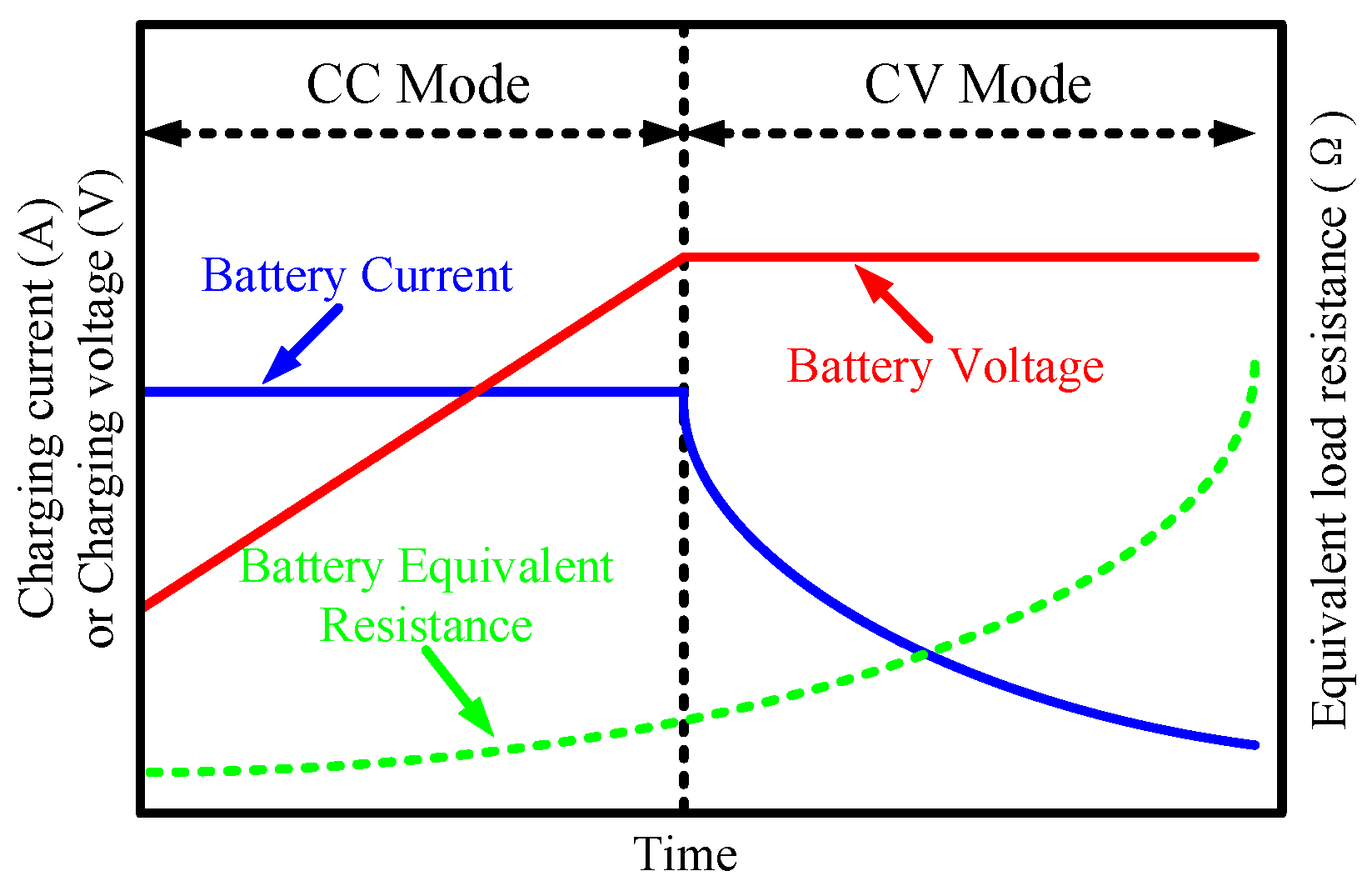
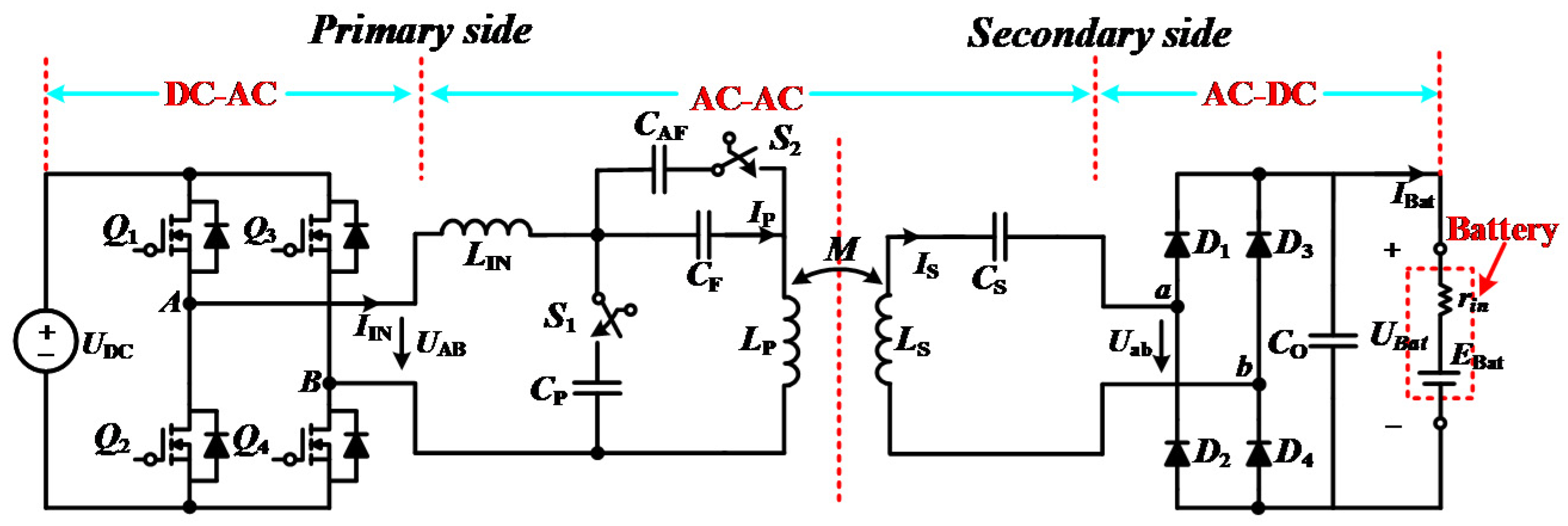
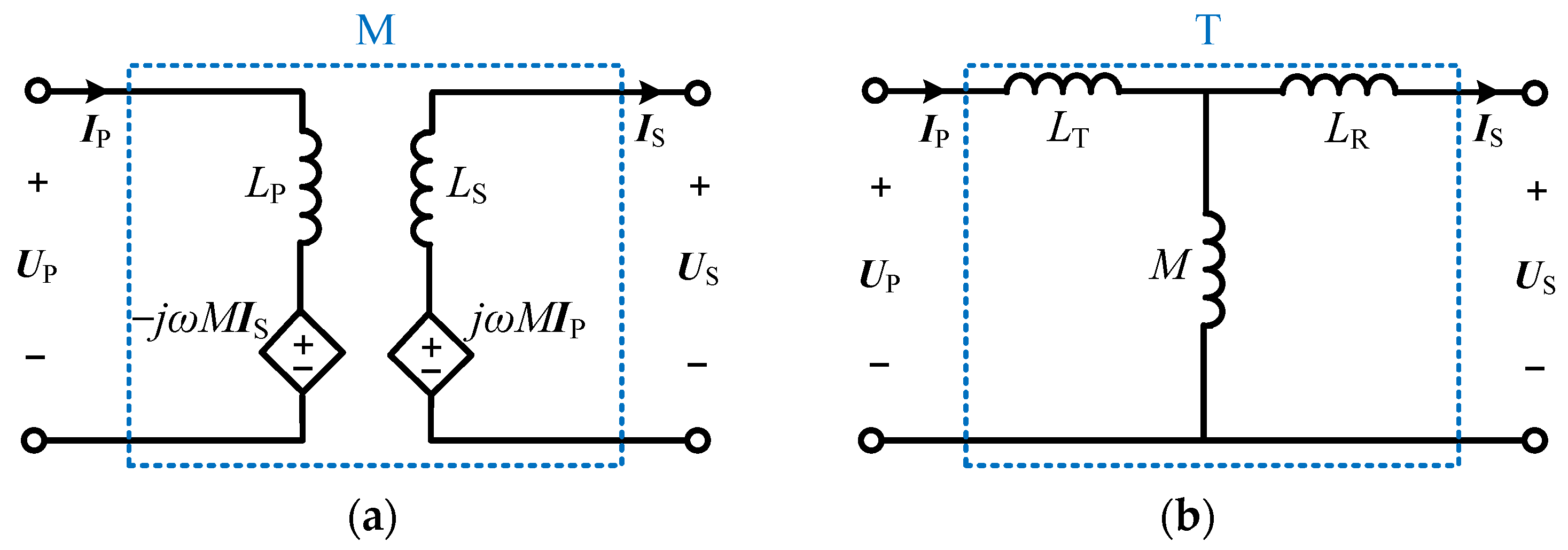
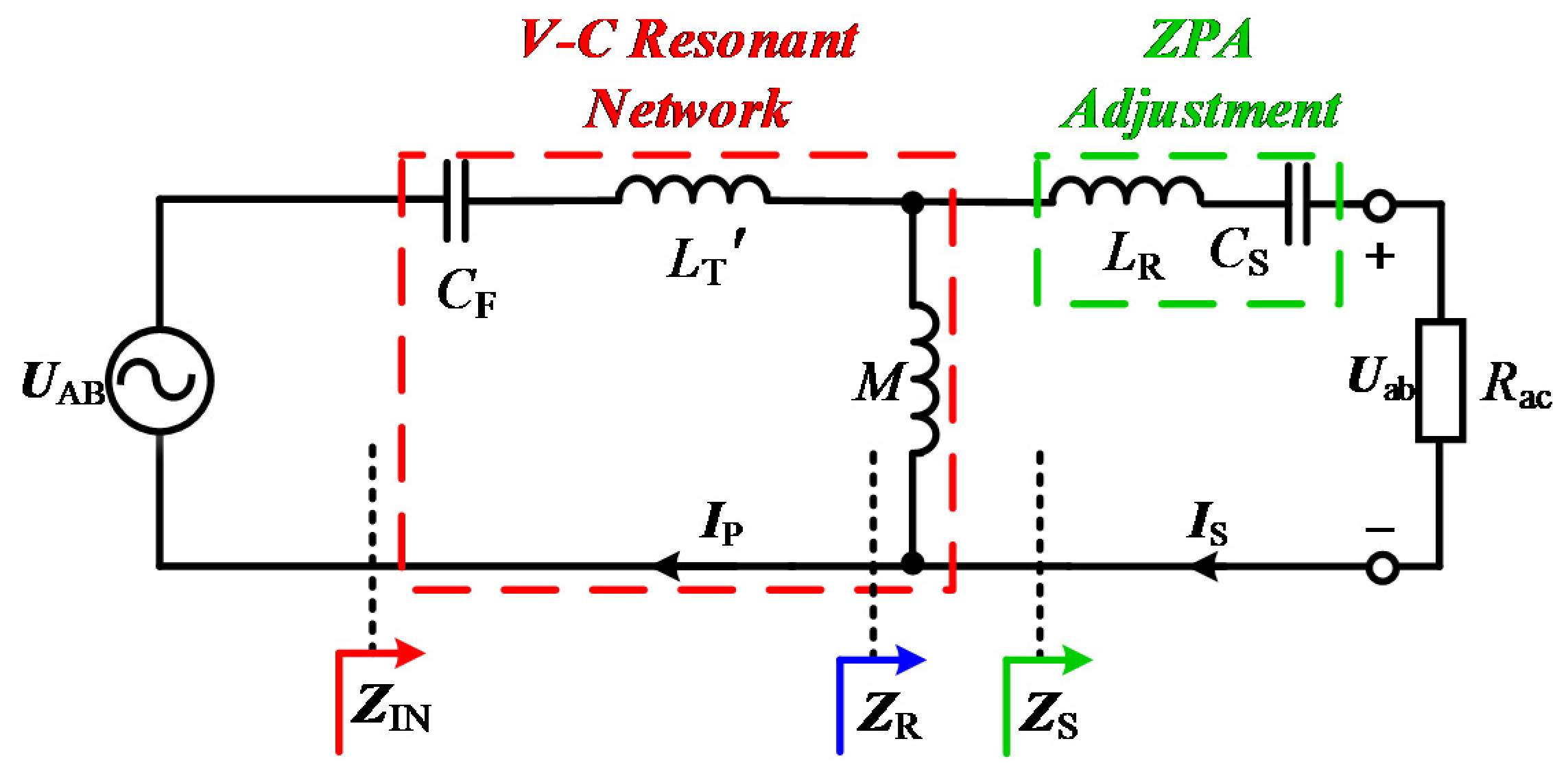

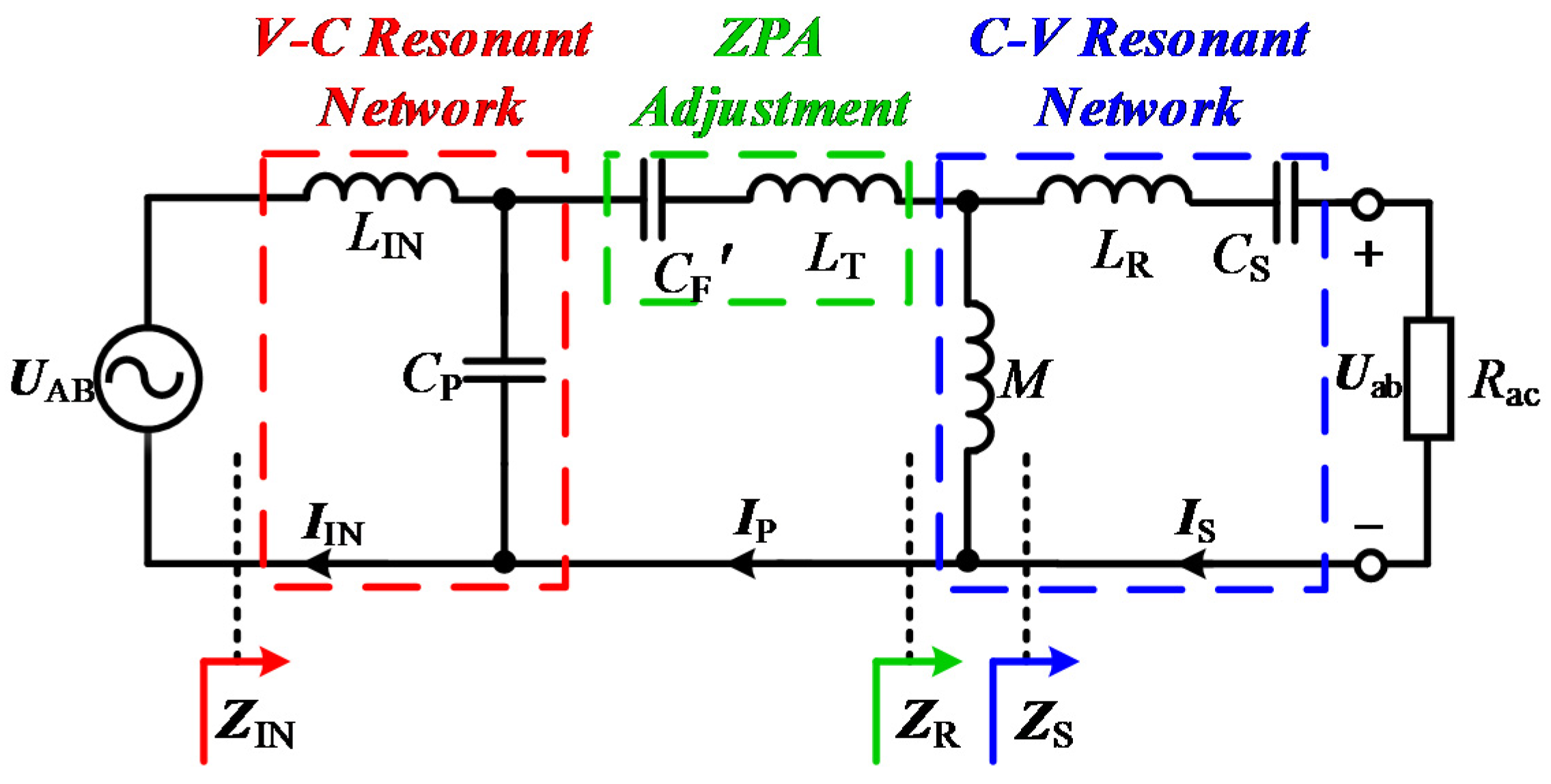

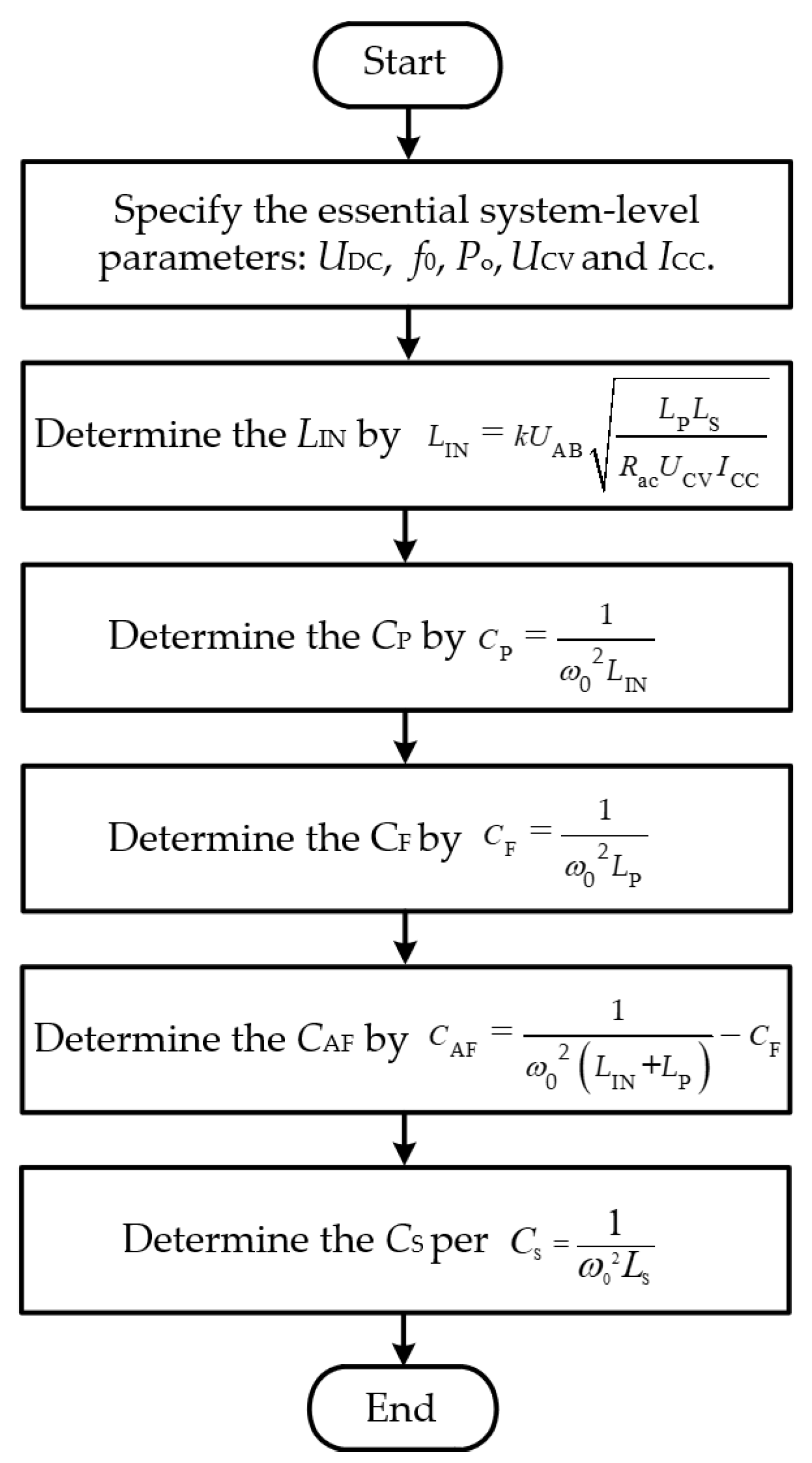




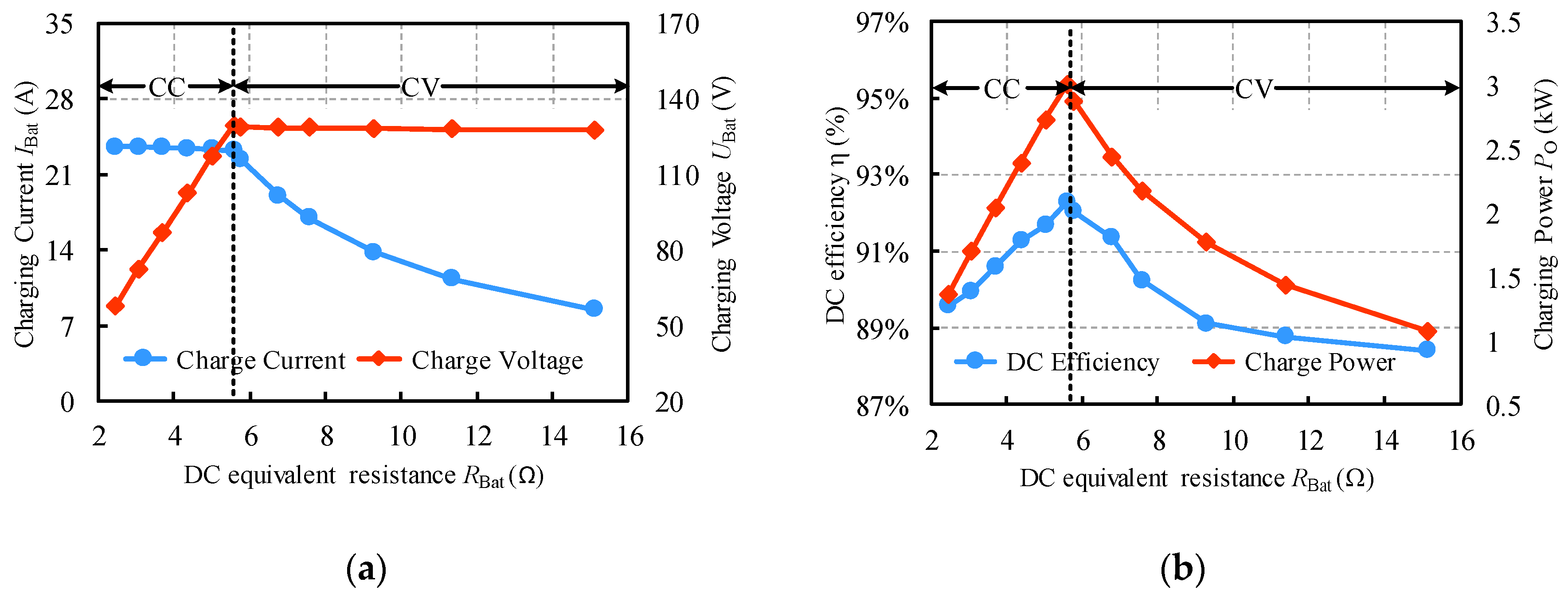
| Note | Symbol | Value |
|---|---|---|
| DC-link voltage | UDC | 300 V |
| Resonance frequency | f0 | 85 kHz |
| Maximum charging power | Po | 3000 W |
| Constant charging voltage | VCV | 130 V |
| Constant charging current | ICC | 23 A |
| Coupling coefficient | k | 0.09 |
| Primary coil self-inductance | LP | 203.37 µH |
| Secondary coil self-inductance | LS | 226.22 µH |
| Primary-loop compensation inductance | LIN | 44.68 µH |
| Primary-loop series compensation capacitance | CP | 78.54 nF |
| Primary-loop additional-series compensation capacitance | CAF | 8.03 nF |
| Primary-loop shunt-compensation capacitance | CF | 22.22 nF |
| Secondary-loop series-compensation capacitance | Cs | 15.33 nF |
| CP | CF | CAF | CS | |
|---|---|---|---|---|
| Capacitance (nF) | 78.54 | 22.22 | 8.03 | 15.33 |
| Current (A) | 16.85 | 11.28 | 3.00 | 25.76 |
| Current Equation | (29) | (17) | (28) | (11) |
| Voltage (V) | 631.26 | 953.71 | 953.71 | 3158.68 |
| Proposed | [19] | [20] | [21] | [22] | [24] | |
|---|---|---|---|---|---|---|
| Inductors | 1 | 0 | 1 | 1 | 4 | 1 |
| Capacitors | 4 | 3 | 2 | 5 | 8 | 3 |
| ACSs | 2 | 3 | 3 | 2 | 2 | 1 |
| Location of ACSs | Transmitter | Receiver | Transmitter | Both sides | Receiver | Transmitter |
| Coils | 2 | 3 | 2 | 2 | 4 | 2 |
| Control Frequency | Fixed | Fixed | Fixed | Fixed | Fixed | Changed |
| Power | 3000 W | 151 W | 15 W | 2500 W | 1000 W | 200 W |
| Efficiency | 92.58% | 88% | 92.8% | 89.28% | 93.9% | 87% |
© 2020 by the authors. Licensee MDPI, Basel, Switzerland. This article is an open access article distributed under the terms and conditions of the Creative Commons Attribution (CC BY) license (http://creativecommons.org/licenses/by/4.0/).
Share and Cite
Hwang, S.-H.; Chen, Y.; Zhang, H.; Lee, K.-Y.; Kim, D.-H. Reconfigurable Hybrid Resonant Topology for Constant Current/Voltage Wireless Power Transfer of Electric Vehicles. Electronics 2020, 9, 1323. https://doi.org/10.3390/electronics9081323
Hwang S-H, Chen Y, Zhang H, Lee K-Y, Kim D-H. Reconfigurable Hybrid Resonant Topology for Constant Current/Voltage Wireless Power Transfer of Electric Vehicles. Electronics. 2020; 9(8):1323. https://doi.org/10.3390/electronics9081323
Chicago/Turabian StyleHwang, Sang-Hoon, Yafei Chen, Hailong Zhang, Kang-Yoon Lee, and Dong-Hee Kim. 2020. "Reconfigurable Hybrid Resonant Topology for Constant Current/Voltage Wireless Power Transfer of Electric Vehicles" Electronics 9, no. 8: 1323. https://doi.org/10.3390/electronics9081323
APA StyleHwang, S.-H., Chen, Y., Zhang, H., Lee, K.-Y., & Kim, D.-H. (2020). Reconfigurable Hybrid Resonant Topology for Constant Current/Voltage Wireless Power Transfer of Electric Vehicles. Electronics, 9(8), 1323. https://doi.org/10.3390/electronics9081323






